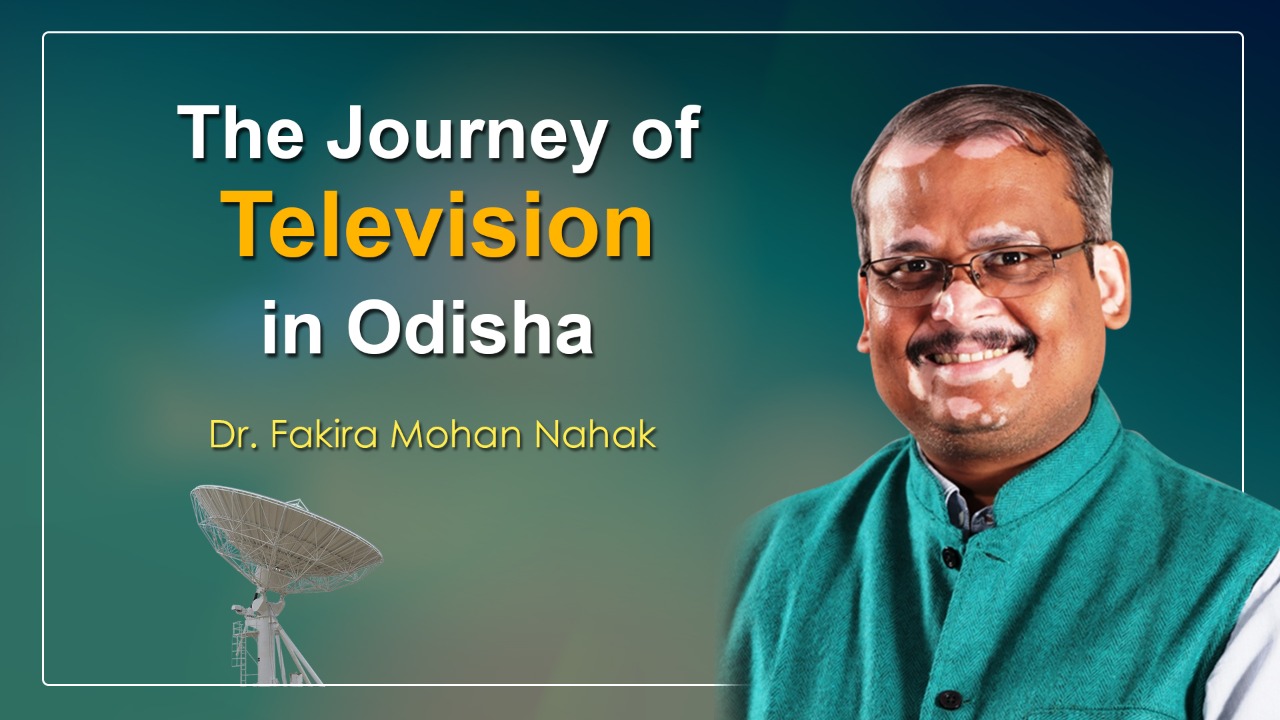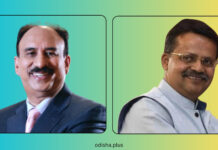Dr. Fakira Mohan Nahak
The Television News Industry in Odisha has gone through A Progressive Journey in the Past Two Decades. In This Series, Dr. Fakira Mohan Nahak Presents the Media History Blended With his Close Observation on the Fast-Changing Industry.
Whether it’s television, newspapers, or digital media, in this fast paced world, the information and news we receive from all these media sources often confuse us. We are being fed with the news of murder, robbery, rape, political crime, economic crime, extramarital affairs, and immorality most of the time. Ordinary viewers, and readers, are upset to see or read all this news. That’s probably why there is a growing interest in stand-up comedy or satire on television, and it’s becoming more and more popular. With a little bit of a break from the rush of daily life, people want to breathe a sigh of relief, or to relax. So it is quite natural that people would pay attention to the human interest stories.

Over the last decade, there are mushrooming news channels in the country. There is chaos and drama in the name of delivering the news to the viewers. In the rat race of gaining viewership, they don’t shy away from exaggerating or dramatizing. However people love to start the day on a happier note. Pleasantly presenting some interesting facts or figures helps to attract the viewers as well as keeps the audience happy. That’s why most of the channels have some special bulletins in the morning to lift the mood of the audience. But before the trend started, ETV Network was producing a special program called “Hello India”. In fact the program was a trendsetter. The purpose of the program was to look at everything from a different perspective and present it accordingly. The program was conducted in various Indian languages, including Hindi, Odia, Telugu, Kannada, Bengali, Gujarati and Marathi.
Hello India program comprised of four different segments to attract the audience. The segments were City Lights, Globetrotting, Kaleidoscope and Spot Lights. The first part of the program – City Lights – featured the specialties of various cities in the country, the customs there, the festivals of the respective cities, the attractions, and so on. The second segment name is self-explanatory. It was a global segment. Popular events across the globe, tourist attractions, the hospitality of the countries concerned, and their food, drink and culture were covered. This segment, in particular, was compiled by collecting regular stories or feeds from various news agencies such as Reuters, CNN and APTN and there were no specific reporter deployed for this segment.

Similarly, the third section presented as Kaleidoscope was a short documentary on the art, sculpture, tradition, folk art, folk dance, and so on from all corners of the country. As a result, the audience at home was able to absorb the diversity of cultural and social life of our country. “Hello India” was a great way to spread the word. Similarly, the fourth section – Spotlight – featured an established and talented individual who has created a niche of his own in the hearts of millions. People got the chance to know more about the eminent personalities in each episode. In other words, the Indian tradition of acknowledging and appreciating the talent was revived in this section.
A special desk for channels of all languages was created to design, manage and produce the program “Hello India”. A team of reporters were reporting specifically for the program. Reporters from bureaus across the country were also reporting for “Hello India”. A dedicated resource for each language was working for the program. Juel Samuel, an experienced and talented professional was the producer of the program and the team comprised of Tulsidas Mishra, Devkamal Ganguly, Indrani Roy, Stella Paul, A.R. Reshmi, Sunanda Shankar Sinha and Krishna Prasad. Dillip Singh was fully responsible for the technical development of the program for ETV Oriya. Mukulika Ghosh from Kolkata, Samhati Roy from Bengaluru, Nilaya Bhattacharya from Guwahati, Gopal Shetty from Mumbai and Sarat Paikray from Bhubaneswar were also reporting for the program.

“Hello India” was broadcast daily at 8 am. Most of the time, this program in ETV Odia was presented by Ramesh Kuanr, the channel’s graphic designer. It was really great on the part of the channel to give chance to someone from the technical department to present the program as predominantly news anchors get this opportunity or responsibility. Each episode had a small competition for the audience to keep the viewers engaged. Sometimes winners were given gift hampers.The program was well-received in all quarters and touched the hearts of the people. Such a creative experiment, launched by ETV, has been the inspiration for television channels operating in different parts of the country today and there are programs on the similar line of Hello India.
(Dr. Fakira Mohan Nahak is a writer and former media professional. He is currently working as the Head of the Department of University Institute of Media Studies, Chandigarh University at Mohali, Punjab. Views are Personal)
#ETVOdia #HelloIndia #ETVHelloIndia #historyofETV





















